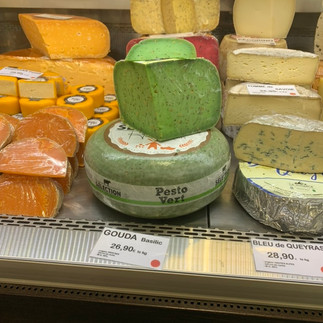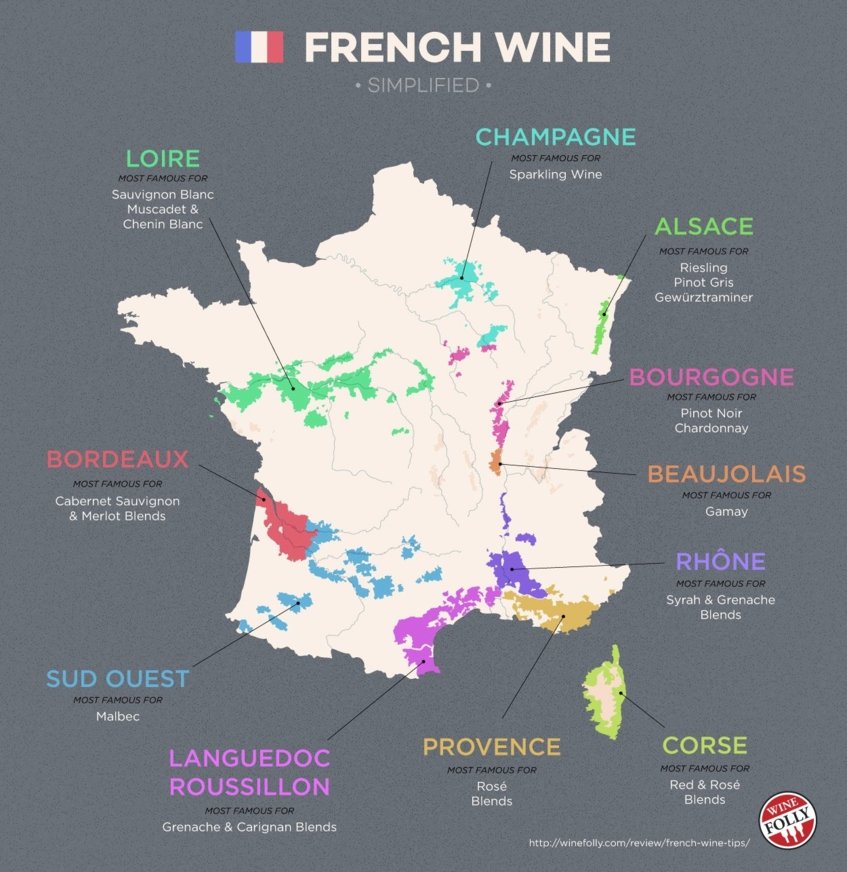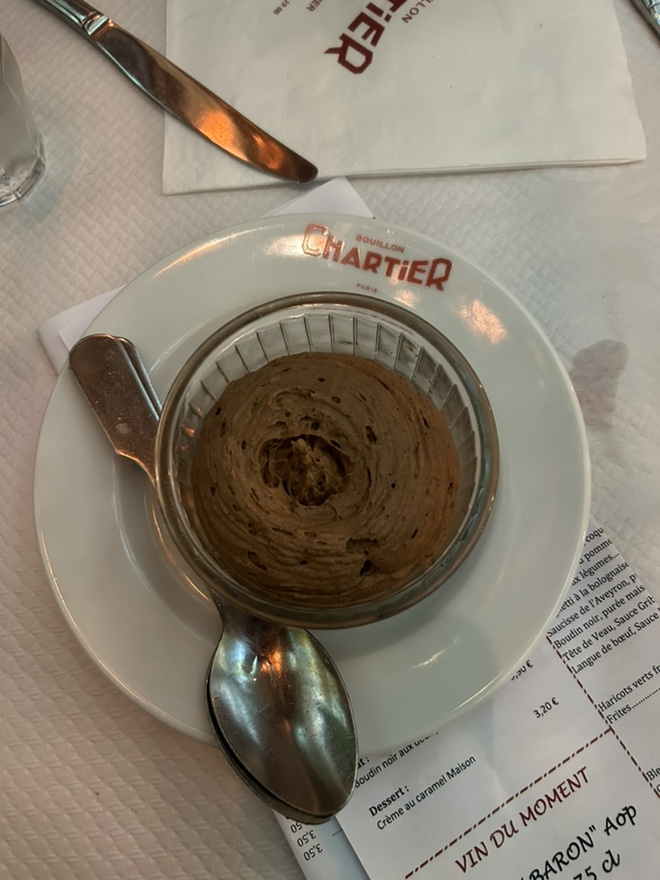Top 10 French foods you must try on your first trip
- sydneychapman5
- May 11
- 6 min read
Notorious for having one of the best cuisines in the world, it's hard to know where to start when it comes to trying food during a first visit to France. From pastries to cheeses to desserts, it can feel like the options are endless. To help solve this problem (a good one to have, I'd argue), I've compiled a top ten list of foods that you should try, especially if it's your first time visiting the country.
This list features a combination of my personal favorites and some of the most popular French food options, offering a balanced mix of sweet and savory, snacks and full meals. I’ve also included a few recommendations on where to try them for the most authentic experience.
Let’s dive into my guide to the top 10 French foods!
Croissant/Pain au Chocolat/Almond Croissant
No list of traditional French food would be complete without the croissant. The French take pride in this buttery, flaky pastry, and it’s easy to see why. Even the smallest neighborhood bakery can serve a croissant that outshines anything you’ll find at home. In most areas in France, a plain croissant shouldn't cost more than 1,50 euros. If a bakery has plain croissants for 2 euros or higher, beware that it may be a tourist trap.
A close second in popularity to the classic croissant is a pain-au-chocolat. Often times when you get one in France, the chocolate is still gooey in the middle and it melts in your mouth. Also, be aware that some areas of France refer to this treat as a pain-au-chocolat while others call it a chocolatine. It's something that the French have jokingly disagreed upon forever. Paris and the Cote d'azur areas use pain-au-chocolat and Southwestern France uses chocolatine.
There are also many other types of flavored croissants. My personal favorite is an almond croissant, which is a traditional croissant stuffed with a creamy almond filling and topped with sliced almonds and powdered sugar. Other types of croissants that you may see include pistachio croissants and raspberry croissants. I definitely recommend giving one of these flavored croissants a try too, as it can be a nice switch from the basics.
Baguettes and Cheeses
Another French staple is baguettes and cheeses. I grouped these together because I believe that they're best eaten together. While you can find baguettes anywhere, bakeries (boulangeries) offer the best quality. Similar to plain croissants, a baguette shouldn't cost more than 2 euros. In terms of cheeses, there are so many different kinds to try. My recommendation would be to go to a dedicated fromagerie, where the employees will be very knowledgeable about the different cheeses and help you pick one that suits your tastes. If you can't get to a fromagerie, some popular French cheeses include:
Brie: Soft in the center with a semi-hard rind, one of the milder cheeses.
Camembert: Similar in appearance to brie, but more full-bodied and salty.
Roquefort: A blue cheese, strong and rich in flavour.
Pont l'Eveque: A soft, mild but rich cheese.
Pair your cheese and baguette with some cured meats and fruits, and you have a full charcuterie platter. To take it one step further, put it all together in a sandwich!
Steak Frites
Steak frites has become a cornerstone of traditional French food, which is ironic because the dish actually originates from Belgium. It's especially popular around the city of Paris. Oftentimes, a ribeye steak will be used, but cuts can vary depending on the region. The fries are usually cut in a shoestring style, making them thin and crispy. Sauces can vary too. Sometimes the steak will be served with a peppercorn sauce, like the steak I had at Bouillon Chartier (pictured above), and sometimes it's just served with butter. The fries may also come with an aioli, mayonnaise, or ketchup.
While this dish is something that is now served worldwide, and with its simplistic nature, easily replicable, I still think it's a dish that's crucial to try in France. Steak Frites is an essential staple of French culture. In Paris especially, you'll find traditional restaurants that only serve steak frites, Le Relais de l'Entrecote being the most famous. These restaurants and their simple menu offer a glimpse into French history, with classic Parisian values, from the decor to the food to the service.
Macarons
Another famous French treat is the Macaron. This small cookie sandwich, filled with a sweet buttercream or jam in the center, is sweet and light, and the perfect treat when you're craving a sugary bite. They can come in many flavors, including vanilla, chocolate, pistachio, and raspberry. Over time, this treat has become so famous that you can even find it in McDonald's in France. While I have had the McDonald's one, and I must say it's not bad, I'd definitely recommend finding an authentic French Patisserie and trying one there. These establishments have mastered the balance of sweetness, fluffiness, and that perfect cake-to-filling ratio.
Madeleine
This shell-shaped sponge cake is a less touristy but deeply beloved part of French food culture. Traditionally flavored with lemon and almond, madeleines are light, fluffy, and often served with coffee or tea. Their distinct shape and subtle flavor make them a quiet yet unforgettable treat.
Crepes
For breakfast, lunch, dessert, or a snack, crepes are a super versatile food. There are two main categories of crepes. Sweet crepes are called crêpes sucrées. These crepes are often filled with different fruits, a custard or chocolate sauce, and sometimes topped with icing sugar. You can find sweet crepes at a dedicated creperie, where you can sit down and enjoy a meal. You can also find this sweet treat at stalls and food trucks, where they'll make your order on the fly and serve it in a handheld format (like the one I had right next to the Eiffel Tower, pictured above on the left). A savory crepe is called a galette. This style typically uses buckwheat flour and consists of ingredients like ham, cheese, egg, mushrooms, tomatoes, or onions. You will typically only find this type of crepe at a creperie.
One of my favorite lunches in Paris was at Crêperie des Arts, a small creperie near Notre Dame. Affordable, authentic, and absolutely delicious, a great example of traditional French food done right.
Beef Bourguignon
Bourguignon is a culinary term used to describe a dish cooked in wine. Beef Bourguignon is a French stew made up of beef braised in red wine (often Burgundy), beef stock, and vegetables such as carrots, onions, and garlic. This dish is rich and packed with flavor. The slow braising of the beef makes it incredibly tender, and the vegetables provide a nice contrast of texture. The stew is often served with a side of either boiled potatoes, mashed potatoes, or pasta.
If you're looking for a warm, hearty meal on a cold Parisian evening, beef bourguignon is exactly what you need!
Wine
While not a food, it didn't feel right to not include wine on this list, considering France is one of the biggest wine-producing countries in the world. One thing I think is special about France's wine industry is its diversity. From a Bordeaux Cab Sav to a Provence Rosé to a Bourgogne Chardonnay and even Champagne, France has a wine for every taste bud.
I could probably go on about regions and grapes for ages, but to simplify, I've attached a map that highlights the main wine-producing regions and the grape varietals that each is known for. Refer to this before your visit to determine which wines you should try based on what area you're visiting.
Mousse
My personal go-to dessert if I see it on any menu, mousse is a classic finish to a French meal. This airy, chocolately dessert is perfectly light and sweet. While this is another dish that has gained so much popularity that it's travelled to other continents, and may be something you could find at home, I can tell you the French do it different. As a lover of mousse, having had it many times in many different places, I can confidently say that the mousse I had in France was some of the best of my life.
If you're planning a visit to Paris during your upcoming trip, be sure to try the mousse at Bouillon Chartier. This historic French restaurant makes a simple, delicious mousse, which is the perfect ending to a classic French dinner.
Escargot
The last item on the list is certainly an acquired taste. Escargot (or snails in English) is served at every traditional French restaurant. Typically, an order would come with about 25-30 snails, served in a special dish called an escargot plate, and topped with butter, garlic, and parsley. You eat the snails by picking them up with a special tool called a pince à escargot and removing them from the shell with a tool called a fourchette à escargot.
Like I said before, this dish certainly isn't for everyone. The texture of a snail is very unique, and can be off-putting for some people. That being said, I think its significance in French culture makes it a dish you should strongly consider trying when visiting the country. My recommendation would be, if possible, to split the dish with a friend and to try it at a bouillon, which is a traditional French restaurant where food is notoriously very affordable. This way, if you aren't a big fan, it doesn't feel like as much of a waste, and if you like it, you can order more!
France’s culinary culture is woven into its identity, and trying these popular French foods offers more than just a delicious experience; it provides a glimpse into the soul of the country. Whether you’re sipping wine under the Eiffel Tower or enjoying a fresh baguette in a quiet village, each bite tells a story. Bon appétit and happy travels!































Comentarios